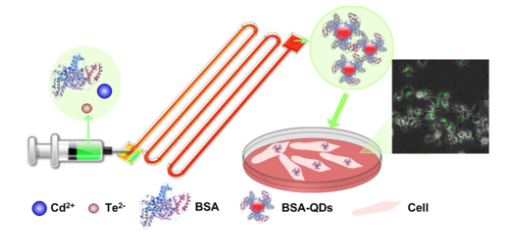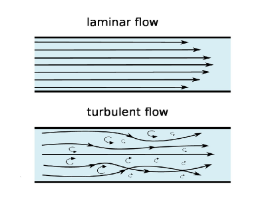The microfluidic technology has positively disrupted the traditional experimental and analytical techniques in the field of molecular biology, microanalysis, biodefense, and microelectronics. Use of microfluidic principle has miniaturized diagnostic devices (Figure 1). The magnitude of disruption reflects in the following statement of Figeys and Pinto (2000):
In the same way that integrated circuits allowed for the miniaturization of computers from the size of a room to the size of a notebook, miniaturization has the potential to shrink a room full of instruments into a compact lab-on-a-chip. (p.330A)
However, most literature fails to highlight the basics of microfluidics. In this respect, this discussion reflects on the basics of microfluidics, its meaning, its basic characteristics, its applications, and its advantages.

Figure 1 Microfluidics synthesis for bioimaging (Hu et al., 2014).
Microfluidic is a sub-branch of fluid mechanics that studies the physics of fluid flow using the fundamental governing equations. Academicians define microfluidics as a science of fluid at the micrometer scale. Though the same equations govern physics of large-scale fluids and microfluidics, a microfluidic system has smaller features. The microfluidic systems have characteristic length scale—height or width or both– in micrometers (μm), unlike other fluid systems which have larger dimensions.
At micrometer scale, a fluid flow is laminar unlike a turbulent fluid flow at the larger-scale (Figure 2). For example, consider the laminar blood flow in our arteries compared to the turbulent flow of water in a river. Fluid flow in a microfluidic system is mostly laminar. The microfluidics is transported in the form of tiny droplets in closed channels or open surface devices. Consequently, the surface tension effects are larger in the microfluidic systems, and the gravitational force gets neglected. The fundamental governing equations of fluid mechanics are equally true for microfluidics, but these equations reduce to simpler form for a microfluidic system. Complex fluid equations reduce to simpler form because one needs to neglect the effects of turbulence and gravity. Presence of fewer control variables makes it easy for the medical students, practitioners, and researchers to study dynamics of a given fluid flow.

Figure 2 Fluid particles under laminar and turbulent flow.
Above discussion shows that a microfluidic system reduces the complexity and scale of an experiment. The simpler design of a microfluidic system provides numerous advantages. Following are the major advantages of a microfluidic system. First, a microfluidic system consumes less power (mechanical and electrical power); therefore, it has lower carbon footprint; this makes it eco-friendly. Second, a microfluidic system consumes less fluid due to its millimeter scale design. This feature makes it highly suitable for the laboratory experiments resulting in less consumption of costly suspensions and solutions. Third, a microfluidic system gives higher control over a fluid flow. The higher control is due to laminar flow in the microfluidic channels against the turbulent flow in the larger machines. Fourth, the micrometer level design of these systems permits slow diffusion of fluids, selective insertion of agents, and controlled droplet creation into a flowing stream. In addition, the capillary action eliminates the frequent use of pumps.
At this juncture, it is important to discuss few successful applications of the microfluidics. Though this discussion focuses on microfluidics use in the industry and academia, it is worth to look at few common microfluidic devices. Historically, inkjet is credited to be the most popular application of microfluidics. It is widely used in home and office environments. Use of the microfluidic system in large integrated circuits (IC) has been another success story. The microfluidic channel helped to solve problems of heat dissipation and heat transfer in the IC systems. Similar systems are still used for cooling large processors and high-performance central processing unit chips. Therefore, initial developments in the field of microfluidics can be contributed to the developments in the field of microstructural electrical and electronic engineering e.g. microelectronics. Gradual improvement of the microfluidic system has helped its transition from the microelectromechanical system (MEMS) to multi-disciplinary science field comprising of biology, biochemistry, physics, and engineering. The recent increase in the number of patents and research papers are clear indicators of microfluidics devices both in academia and industry, showing its growth.
References:
-
Figeys, D., & Pinto, D. (2000). Lab-on-a-chip: a revolution in biological and medical sciences: ACS Publications.
-
Hu, S., Zeng, S., Zhang, B., Yang, C., Song, P., Danny, T. J. H., . . . Coquet, P. (2014). Preparation of
biofunctionalized quantum dots using microfluidic chips for bioimaging. Analyst, 139(18), 4681-4690.
